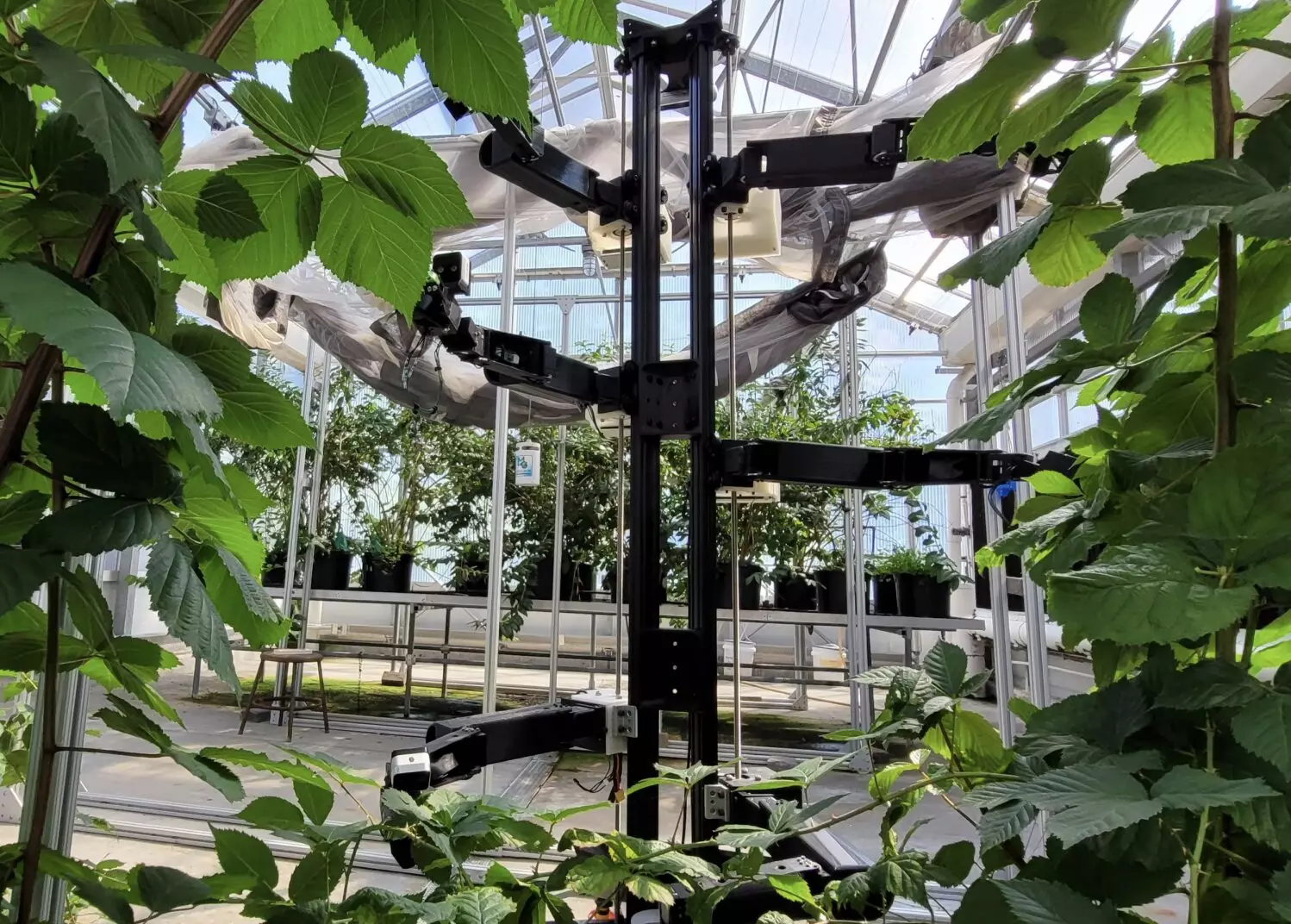In recent years, the decline of natural pollinators has raised concerns about the future of food security. With the extinction of various animal species that play a crucial role in pollination, the growth of fruits, vegetables, and seeds is being threatened on a global scale. This has led to the development of alternative pollination approaches, with engineers focusing on creating robotic systems that can autonomously disperse pollen in the air.
Researchers at West Virginia University have been at the forefront of this innovation, working on precision pollination robots that employ carefully tailored strategies to transfer pollen to specific types of flowers. Their latest creation, Stickbug, is a six-armed robot designed to revolutionize the way we approach pollination in agriculture. Combining the accuracy of single-agent systems with swarm parallelization, Stickbug aims to address the limitations of previous pollination robots.
Stickbug utilizes a compact holonomic Kiwi drive to navigate narrow greenhouse rows, a tall mast to support multiple robotic arms, and a detection model and classifier to identify flowers in need of pollination. With its six robotic manipulators, Stickbug can tackle different pollination tasks independently, increasing efficiency and reducing the time required to pollinate entire fields. The robot’s end-effector is equipped with a felt-tipped tool for contact-based pollination, ensuring precision in its pollination efforts.
In a real-world experiment, Stickbug was put to the test in front of an artificial bramble plant, demonstrating its ability to attempt over 1.5 pollinations per minute with a 50% success rate. This initial validation highlights the potential of Stickbug to revolutionize the way we approach pollination in agriculture. The researchers have also made the Bramble flower perception dataset publicly available, alongside Stickbug’s software and design files, allowing for further research and development in this field.
The development of Stickbug represents a significant step forward in the field of precision pollination robotics. With the potential to be tested on real plants in the near future, Stickbug could soon be introduced in real-world settings where natural pollinators are scarce. By combining innovation, technology, and sustainability, Stickbug has the potential to mitigate the effects of declining natural pollinators and ensure the future of food security for generations to come.


Leave a Reply